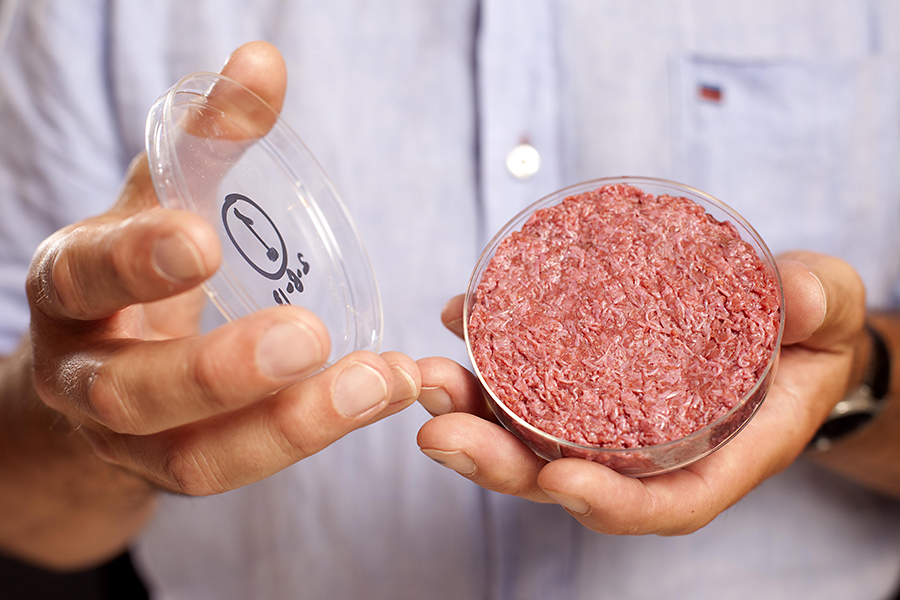The world's first fully lab-grown hamburger was served at a press conference in London earlier this afternoon. The hamburger, which has grown from tiny bits of beef muscle tissue in a laboratory, is hoped to be able to increase food security, create better livestock conditions, decrease greenhouse gas emissions from the meat industry and reduce the environmental impact of livestock farming.
The human population is soon expected to reach nine billion people and, despite the environmental impact, we are eating more and more meat. By 2050 the meat production is expected to increase with 50%. But the current meat production, despite its already inhumane and industrial-like methods, will be unable to meet future demands. The meat industry is already responsible for about one fifth of all greenhouse gas emissions, which is more than the world's transport sector pollutes. Livestock farming also use a lot of land, about 70% of the world's total agriculture land is already dedicated to livestock production - that's around 25% of the planet's total land area. Mark Post, who is the scientist behind the world's first lab-grown hamburger, hopes that his "cultured meat" will someday become one of the major solutions to the environmental and food crisis.
"Cows are very inefficient, they require 100g of vegetable protein to produce only 15g of edible animal protein," Post told the Guardian. "So we need to feed the cows a lot so that we can feed ourselves. We lose a lot of food that way. [With cultured meat] we can make it more efficient because we have all the variables under control. We don't need to kill the cow and it doesn't [produce] any methane."
This all sounds very promising. But Post's work is still in its early stages and there are still a lot of hurdles to overcome. The hamburger which was served today was a fairly simple creation – while being full of protein it lacked blood and fat which regular beef contains. But Post and his team also need to figure out how to scale up the process so that large-scale production can take place. They also need to figure out how the costs involved in the production can be reduced. Although the first taster of the lab-grown hamburger described it as having "quite some flavor", the total cost of the project, which resulted in today's hamburger, has been £250,000.
Post hopes that commercial production of cultured meat could begin within 10 to 20 years.
"Twenty years from now if you have a choice in the supermarket between two products that are identical and they taste and feel the same and have the same price - and one is made in an environmentally friendly way with much less resources and provides food security for the population and doesn't have any animal welfare connotations to it - the choice will be relatively easy," Post said. "People will start to prefer this type of product and then it will gradually transform meat production."

Green Blog wrote about lab-grown and in vitro meat for the first time in 2008. Back then in vitro meat was a fairly new area and there was still a lot of research required and several obstacles that needed to be solved. Post hopes that today's event will show the skeptics that in vitro meat is possible and that it could actually help make the meat industry more ethical and environmentally friendly.
Now the question is, would you eat it?

Recommended Comments
Join the conversation
You can post now and register later. If you have an account, sign in now to post with your account.